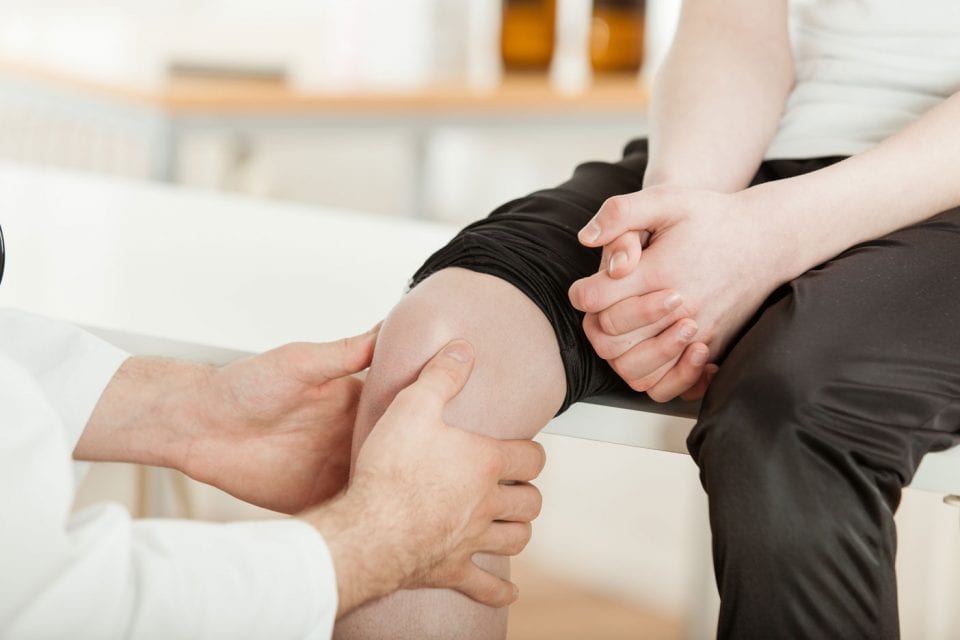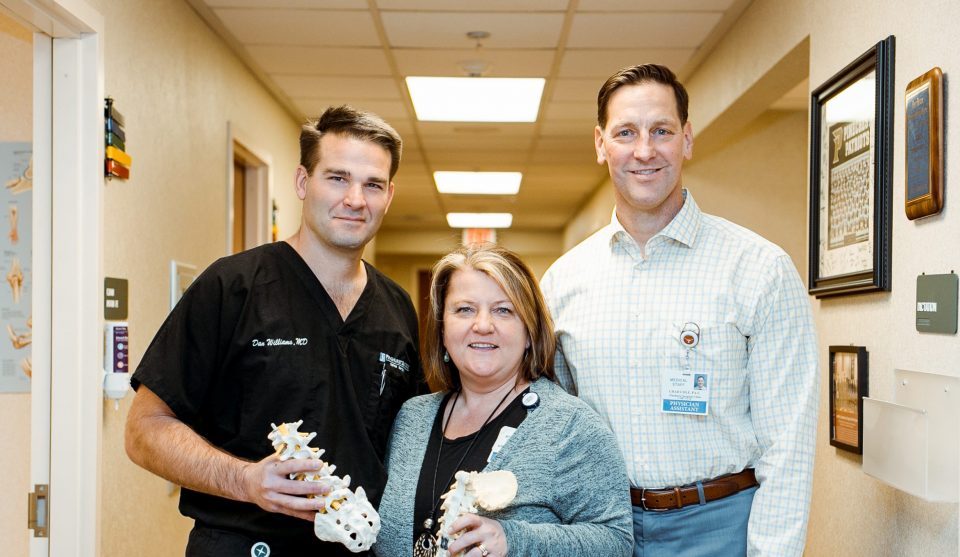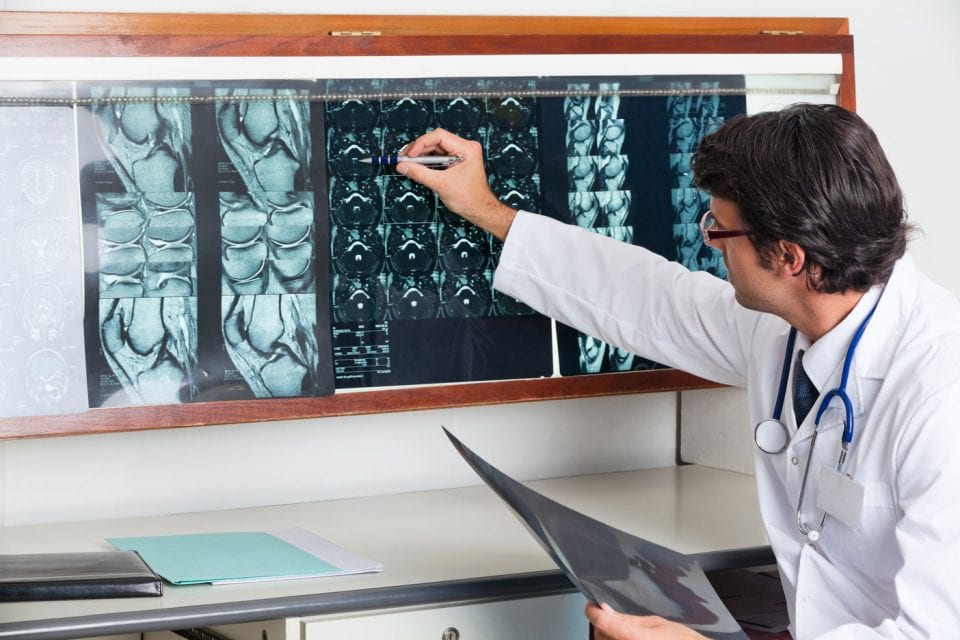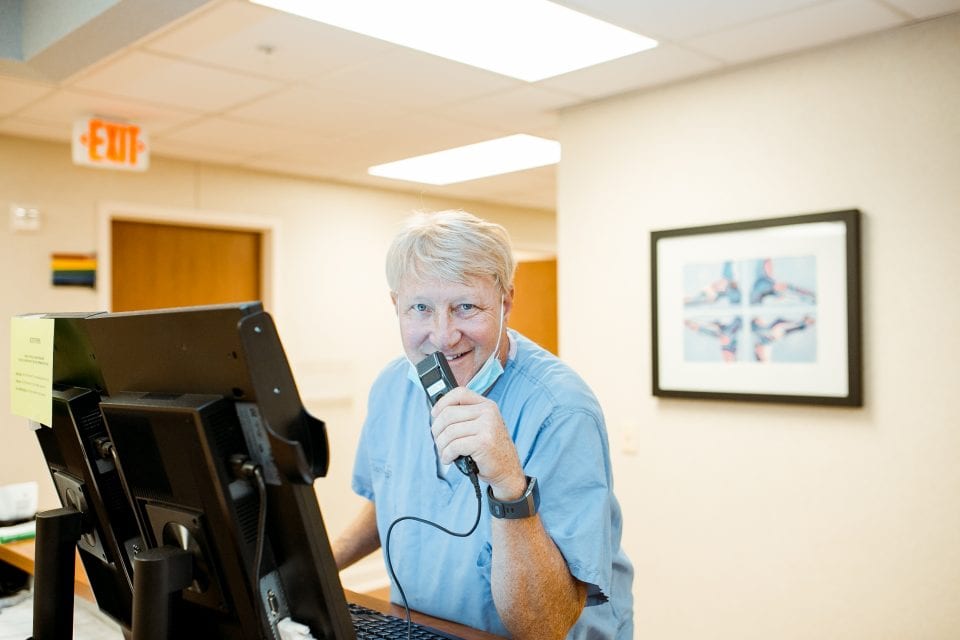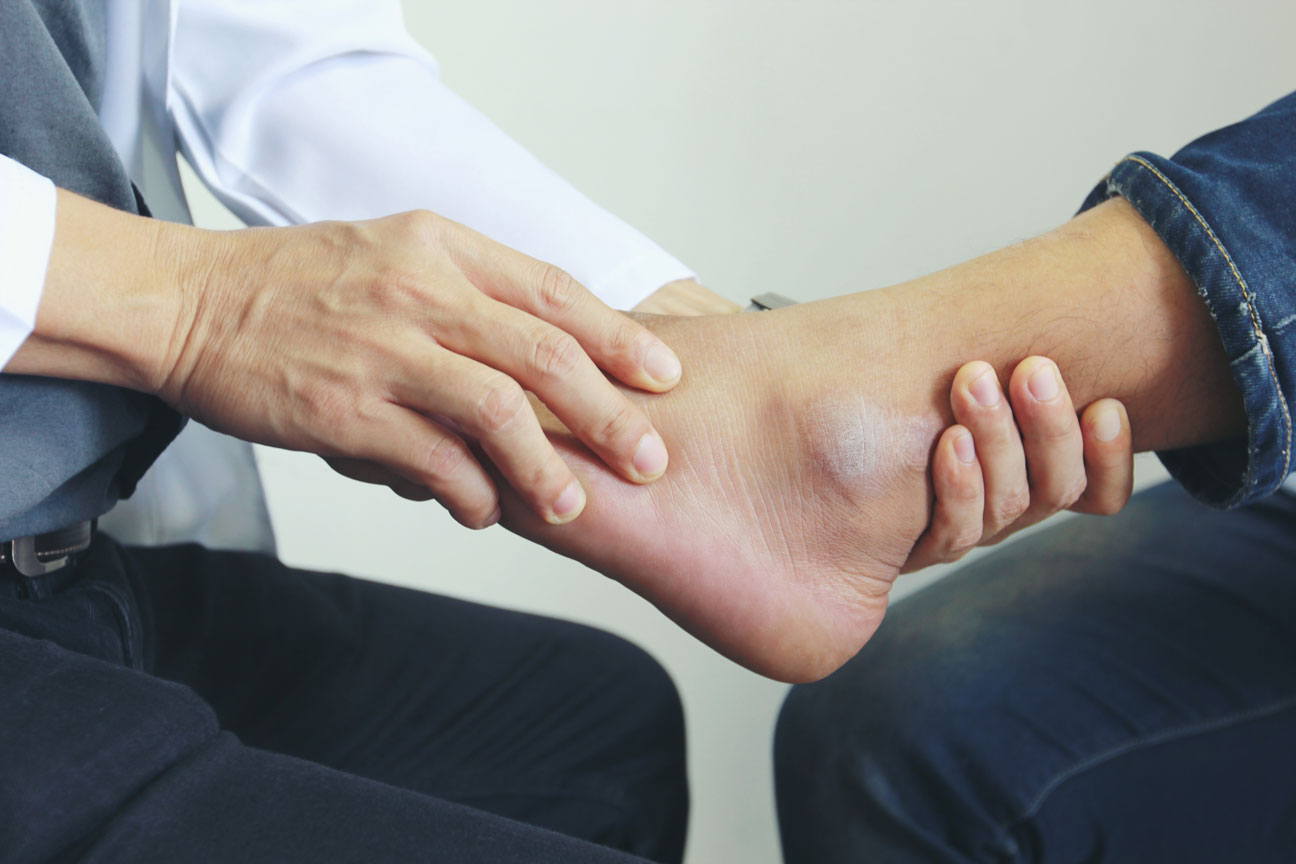
Foot & Ankle
The foot and ankle in the human body work together to provide balance, stability, movement, and propulsion. Anatomy of the Foot and Ankle consist of:
- 26 bones
- 33 joints
- Muscles
- Tendons
- Ligaments
- Blood vessels, nerves, and soft tissue
In order to understand conditions that affect the foot and ankle, it is important to understand the normal anatomy of the foot and ankle.
Foot & Ankle
The foot and ankle in the human body work together to provide balance, stability, movement, and propulsion. In order to understand conditions that affect the foot and ankle, it is important to understand the normal anatomy of the foot and ankle.
| Download Patient Education PDFs |
|---|
| Diagnostic Ankle Arthroscopy Bunionectomy (and First Metatarsal Osteotomy) |
Foot & Ankle Anatomy
| Ankle The ankle consists of three bones attached by muscles, tendons, and ligaments that connect the foot to the leg. In the lower leg are two bones called the tibia (shin bone) and the fibula. These bones articulate (connect) to the Talus or ankle bone at the tibiotalar joint (ankle joint) allowing the foot to move up and down. The bony protrusions that we can see and feel on the ankle are: Lateral Malleolus: this is the outer ankle bone formed by the distal end of the fibula. Medial Malleolus: this is the inner ankle bone formed by the distal end of the tibia. | Hindfoot The foot can be divided into three anatomical sections called the hindfoot, midfoot, and forefoot. The hindfoot consists of the talus bone or ankle bone and the calcaneus bone or heel bone. The calcaneus bone is the largest bone in your foot while the talus bone is the highest bone in your foot. The calcaneus joins the talus bone at the subtalar joint enabling the foot to rotate at the ankle. The hindfoot connects the midfoot to the ankle at the transverse tarsal joint. |
| Midfoot The midfoot contains five tarsal bones: the navicular bone, the cuboid bone, and 3 cuneiform bones. It connects the forefoot to the hindfoot with muscles and ligaments. The main ligament is the plantar fascia ligament. The midfoot is responsible for forming the arches of your feet and acts as a shock absorber when walking or running. The midfoot connects to the forefoot at the five tarsometatarsal joints. | Forefoot The forefoot consists of your toe bones, called phalanges, and metatarsal bones, the long bones in your feet. Phalanges connect to metatarsals at the ball of the foot by joints called phalange metatarsal joints. Each toe has 3 phalange bones and 2 joints, while the big toe contains two phalange bones, two joints, and two tiny, round sesamoid bones that enable the toe to move up and down. Sesamoid bones are bones that develop inside of a tendon over a bony prominence. The first metatarsal bone connected to the big toe is the shortest and thickest of the metatarsals and is the location for the attachment of several tendons. This bone is important for its role in propulsion and weight bearing. |
| Tendons Tendons are soft tissue that connects muscles to bones to provide support. The Achilles tendon, also called the heel cord, is the largest and strongest tendon in the body. Located on the back of the lower leg it wraps around the calcaneus, or heel bone. When inflamed it causes a very painful condition called Achilles tendonitis and can make walking almost impossible due to the Pain. | Ligaments Ligaments are strong rope like tissue that connects bones to other bones and help hold tendons in place providing stability to the joints. The plantar fascia is the longest ligament in the foot, originating at the calcaneus, heel bone, and continuing along the bottom surface of the foot to the forefoot. It is responsible for the arches of the foot and provides shock absorption. A common cause of heel pain in adults, plantar fasciitis can occur when repetitive micro tears occur in the plantar fascia from overuse. Ankle sprains, the most commonly reported injury to the foot and ankle area, involve ligament strain, and usually occur to the talo-fibular ligament and the calcaneo-fibular ligament. |
| Muscles Muscles are fibrous tissue capable of contracting to cause body movement. There are 20 muscles in the foot and these are classified as intrinsic or extrinsic. The intrinsic muscles are those located in the foot and are responsible for toe movement. The extrinsic muscles are located outside the foot in the lower leg. The gastrocnemius or calf muscle is the largest of these and assists with movement of the foot. Muscle strains occur usually from overuse of the muscle in which the muscle is stretched without being properly warmed-up. | Bursae Bursae are small fluid filled sacs that decrease friction between tendons and bone or skin. Bursae contain special cells called synovial cells that secrete a lubricating fluid. When this fluid becomes infected, a common painful condition known as Bursitis can develop. |
Schedule An Appointment
Make an appointment with one of our orthopaedic specialists today.
Orthopaedics After Hours
If you need emergency orthopaedic care after our normal business hours, Pinehurst Surgical Clinic offers on-call orthopaedic coverage, including weekends and holidays.
Our Orthopaedic Providers
Leading Orthopaedic Surgeons in Pinehurst, Southern Pines, Fayetteville, NC & Beyond.
Imaging
We offer a variety of ancillary services to our patients in Pinehurst, Southern Pines, Pittsboro and surrounding areas in NC and SC.
Pinehurst Surgical Clinic is a multi-specialty clinic comprised of ten specialty centers located in a state-of-the-art surgical facility in Pinehurst, NC. Our Pinehurst, Raeford, Rockingham, Sanford and Troy clinical offices offer expert orthopaedic care serving patients in Pinehurst, Southern Pines, Sanford, Troy, Rockingham, Raeford, Fort Bragg & Surrounding Areas throughout North and South Carolina, and beyond.


